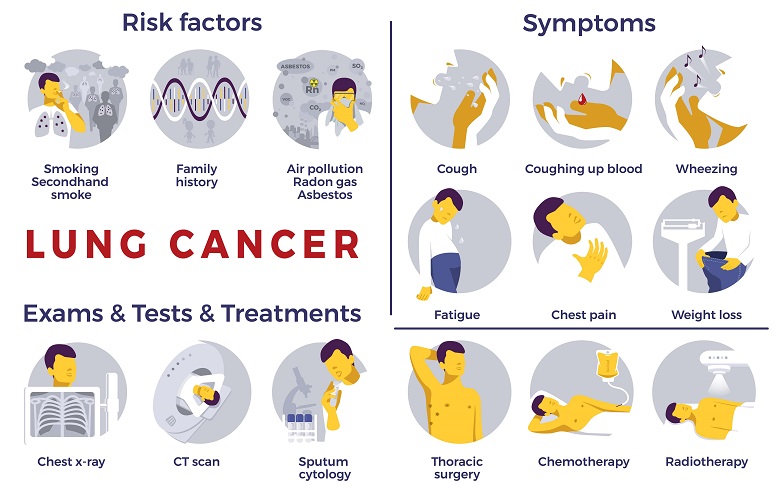
A diagnosis of cancer can be devastating. There are many side effects to treatment and medication, as well as the emotional impact of learning about cancer. It's crucial to coordinate follow-up appointments and treatments with your physician. This can be a daunting task, so make sure to ask questions and communicate with your care team.
Imaging tests are a common way for doctors to diagnose cancer. Image tests include magnetic resonance imaging and computed-tomography (CT), scans. These tests are used to locate and determine the extent of cancer. MRIs make multidimensional images of the entire body using a powerful magnet.
Another diagnostic test that is common is the biopsies. Biopsies involve taking a sample of tissue from the patient and studying it under the microscope. To investigate cancer, lymph nodes are small collections that contain lymph. To prevent the spread of cancer, the doctor will remove the nodes that have cancer cells. However, it is possible to cause pain or swelling by removing the nodes.

Biomarkers are substances or molecules in blood that detect the presence of cancer. In recent years, research has explored the possibility of using biomarkers to detect early stage cancers. Studies have shown that these markers can identify 10 types and stages of cancer. More research is needed before biomarkers can detect tumors early in their development.
The person's medical history, risk factors, health condition, and other conditions will affect whether a patient will undergo an invasive or blood test. It can be lessinvasive than a biopsy. Therefore, it's worth exploring.
People at high risk for developing cancer may benefit from screening tests. They can help determine the extent of the disease, and they can be useful when no symptoms appear. Some screening tests can easily be performed at home. This may improve your survival rate.
Screening for prostate cancer can reduce the disease's specific morbidity and mortality. There are risks associated with treating prostate cancer.

Talking to your physician about the potential side effects and benefits of any proposed treatment is important when a patient is diagnosed. It is also a good idea for patients to ask their doctor about any special precautions they must take. It is a good idea to remind patients to keep track and make follow-up appointments.
Breast cancer is one of the most prevalent types of cancer. While the disease can be treated, many women will have to deal with anxiety and menopause. Women with breast cancer could be exposed to complications due to hormone therapy and chemotherapy.
Early detection of breast cancer may lead to better outcomes for patients and more targeted treatments. In fact, breast cancer incidences have been declining since 1990. While the best screening tests can only do so much, scientific advances in the field of cancer have given researchers more options for treating the disease.
FAQ
What are the three types?
Patients have limited control over the treatment they receive in this system. They visit hospital A if they are in need of an operation. But otherwise, it is best to not bother as there is little else.
The second system, which is fee-for-service, allows doctors to earn money based upon how many operations and tests they perform. They won't do extra work if they don't get enough money. You will pay twice as much.
A capitation system, which pays doctors based on how much they spend on care and not how many procedures they perform, is the third system. This allows doctors to choose lower-cost treatments such as speaking therapies over surgical procedures.
What is the difference between the health system and health care services?
Health systems are broader than just healthcare services. They include all aspects of what happens within the overall context of people's lives - including education, employment, social security, housing, etc.
Healthcare services, on other hand, provide medical treatment for certain conditions like diabetes, cancer and mental illness.
They may also refer the provision of generalist primary health care services by community-based professionals working under an NHS hospital trust.
What are the primary functions of a healthcare system?
The health insurance system should be able to provide the necessary medical facilities for those who require them at a reasonable rate and allow everyone access to quality services.
This means providing preventive and appropriate health care, lifestyle promotion, and treatment. It also involves providing an equitable distribution of health resources.
What are the three levels of health care facilities?
The first level is general practice clinics which provide basic medical services for patients who do not require hospital admission. They can also refer patients to other providers, if necessary. This includes nurse practitioners, general practitioners and midwives.
The second level includes primary care centers that offer outpatient comprehensive care including emergency treatment. These include hospitals as well as walk-in clinics, urgent and family care centers, as well sex clinics.
The third level includes secondary care centers that offer specialist services like eye surgery, orthopedic surgery and neurosurgery.
What should you know about vaccines
Vaccines are very safe and effective ways to keep you healthy. Vaccines give you immunity to certain diseases. Vaccinations are given during the adolescence and childhood. Your doctor can discuss the best time to get vaccinated.
Statistics
- For instance, Chinese hospital charges tend toward 50% for drugs, another major percentage for equipment, and a small percentage for healthcare professional fees. (en.wikipedia.org)
- The healthcare sector is one of the largest and most complex in the U.S. economy, accounting for 18% of gross domestic product (GDP) in 2020.1 (investopedia.com)
- Foreign investment in hospitals—up to 70% ownership- has been encouraged as an incentive for privatization. (en.wikipedia.org)
- Healthcare Occupations PRINTER-FRIENDLY Employment in healthcare occupations is projected to grow 16 percent from 2020 to 2030, much faster than the average for all occupations, adding about 2.6 million new jobs. (bls.gov)
- Price Increases, Aging Push Sector To 20 Percent Of Economy". (en.wikipedia.org)
External Links
How To
What are the Four Health Systems?
The healthcare system is a complex network of organizations such as hospitals, clinics, pharmaceutical companies, insurance providers, government agencies, public health officials, and many others.
This project had the overall goal to create an infographic to explain the US's health care system to anyone who wanted it.
These are some key points.
-
The GDP accounts for 17% of healthcare spending, which amounts to $2 trillion annually. This is nearly twice the amount of the entire defense spending budget.
-
In 2015, medical inflation reached 6.6%, which is higher than any other consumer category.
-
Americans spend an average of 9% on their health costs.
-
As of 2014 there were more than 300,000,000 Americans who weren't insured.
-
Although the Affordable Care act (ACA) was signed into law, its implementation is still not complete. There are still gaps in coverage.
-
A majority believe that the ACA must be improved.
-
The United States spends more on healthcare than any other country.
-
The total cost of healthcare would drop by $2.8 trillion annually if every American had affordable access.
-
Medicare, Medicaid, as well as private insurers, cover 56% all healthcare expenditures.
-
There are three main reasons people don't get insurance: not being able or able to pay it ($25 billion), not having the time ($16.4 billion) and not knowing about it ($14.7 trillion).
-
There are two types of plans: HMO (health maintenance organization) and PPO (preferred provider organization).
-
Private insurance covers many services, including doctors and dentists, prescriptions, and physical therapy.
-
The public programs cover outpatient surgery as well as hospitalizations, nursing homes, long term care, hospice, and preventive health care.
-
Medicare is a federal program that provides health coverage to senior citizens. It pays for hospital stays and skilled nursing facility stays.
-
Medicaid is a program of the federal and state governments that offers financial assistance to low-income people and families who earn too much to be eligible for other benefits.